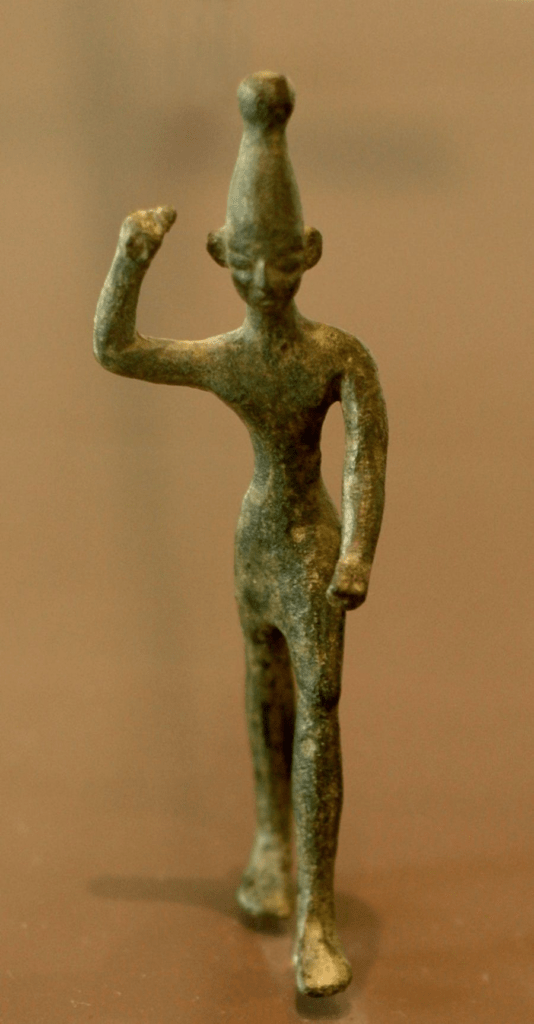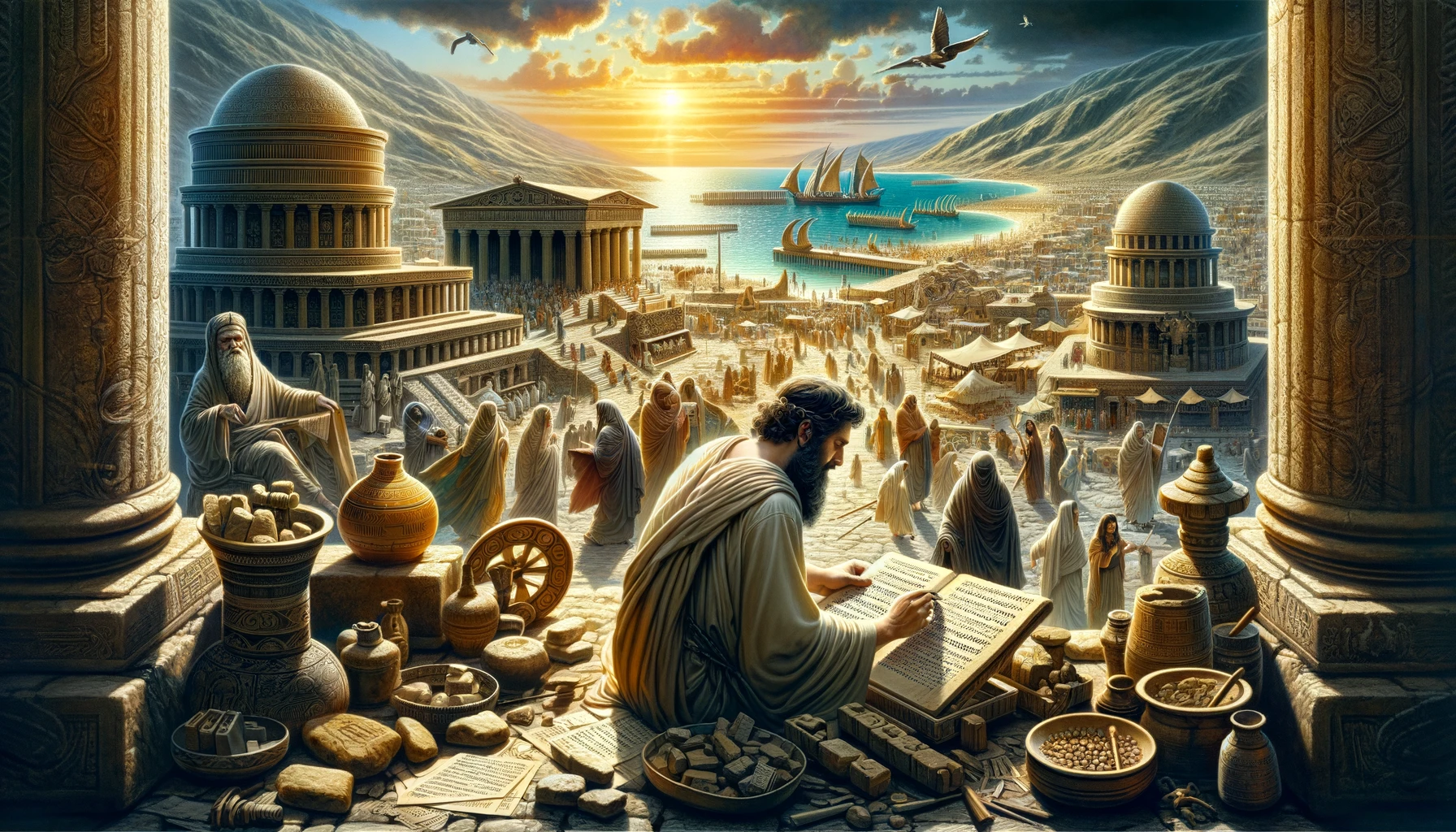Deciphering Divinity: A Journey Through the Clay Tablets of Ugarit
Imagine embarking on a journey through time to the ancient city of Ugarit, nestled on the coast of the Mediterranean, where the whispers of the past are etched in clay tablets, revealing the complex tapestry of Canaanite religion. This is the story of David Toshio Tsumura‘s lifelong scholarly pursuit, culminating in his enlightening book on whether a cult of El existed in ancient Canaan. Through his eyes, we explore the fascinating world of Ugaritic religion and language, drawing parallels and contrasts with ancient Israel’s spiritual landscape.

Tsumura’s journey began in the halls of Brandeis University under the tutelage of Professor Cyrus H. Gordon, diving deep into the Ugaritic language. His quest led him to explore the myths and rituals of Ugarit, shedding light on the elusive figure of El, a deity whose presence in Canaanite religion has puzzled scholars for decades. Tsumura challenges the traditional belief in a centralized cult of El, proposing instead that the worship of this deity was more nuanced, reflective of the polytheistic nature of Canaanite society.
Through meticulous analysis of texts such as the Baal Cycle and KTU 1.23, Tsumura invites us to reconsider our understanding of ancient Canaanite religion. He argues that the term ‘il in Ugaritic texts, previously thought to refer exclusively to the god El, may also denote a more general concept of divinity. This revelation suggests a complex religious tapestry where the boundaries between individual gods and the collective divine blur, offering a fresh perspective on polytheism from within its own cultural context.
Tsumura’s work stands as a testament to the intricate relationship between language, religion, and culture in the ancient Near East. By examining the Ugaritic texts with a critical eye, he peels back the layers of historical and religious syncretism, revealing a vibrant world where gods and men intersected in the rituals and myths that defined their existence.
As we stand on the shores of Ugarit, looking out at the vast expanse of history, Tsumura’s book serves as a beacon, illuminating the path to a deeper understanding of Canaanite religion and its echoes in the biblical narrative. Through his exploration of the divine and the human, Tsumura not only challenges our preconceptions but also invites us to appreciate the rich tapestry of beliefs that shaped the ancient world.
What About Baal?
In a captivating twist to our journey through the clay tablets of Ugarit, we encounter the enigmatic figure of Baal, a deity whose mythic narrative intertwines with that of El, offering a unique lens through which to view the spiritual cosmos of the Canaanites. Baal, known as the storm god, ruler of rain and thunder, stands as a testament to the ancient people’s connection with the forces of nature, their understanding of the cycles of life and death, and their reverence for the powers that govern the fertility of the earth.

The Baal Cycle, a series of epic tales inscribed on tablets discovered amidst the ruins of Ugarit, unveils the struggles, triumphs, and tragedies of Baal, highlighting his role as a champion of order against the forces of chaos. These stories not only illuminate the character of Baal but also reveal the complex interplay between different deities within the Canaanite pantheon, showcasing a vibrant tapestry of divine relationships and rivalries.
As Tsumura delves into these ancient texts, we are invited to ponder the symbolic meanings behind Baal’s battles with Yam, the god of the sea, and Mot, the personification of death. These narratives are not mere mythic tales but reflections of the Canaanites’ deep-rooted fears, hopes, and their perpetual quest for harmony within the natural world. Through Baal’s victories, they celebrated the renewal of life and the assurance of bountiful harvests, themes that resonate with universal significance across cultures and epochs.
This exploration of Baal’s mythology, when juxtaposed with the worship of El, provides a richer understanding of Canaanite religion, shedding light on the diverse and dynamic nature of their spiritual beliefs. The Canaanites did not adhere to a monolithic religious practice but engaged with a pantheon of deities, each embodying different aspects of the cosmos and human experience.
As our journey through the clay tablets of Ugarit draws to a close, we are left with a profound appreciation for the ancient Canaanites’ religious imagination. Their stories, rituals, and deities offer a window into the soul of a civilization that, though long gone, continues to speak to us across the millennia, reminding us of the enduring quest to understand our place within the vast tapestry of existence.
Interesting Findings
Tsumura’s paper contains an extensive analysis of Canaanite religion, drawing from the rich textual heritage of Ugarit and other ancient Near Eastern sources. Here are three surprising findings from the research:
- Polytheistic Fluidity: The study unveils the intricate and fluid nature of Canaanite polytheism, challenging the conventional understanding of rigid pantheons. It suggests that deities like El and Baal were not isolated in their worship but were part of a broader, interconnected divine landscape. This interconnectivity reflects a complex religious fabric where gods assume multiple roles and forms, revealing a dynamic and adaptable religious consciousness among the Canaanites.
- El’s Broad Divinity: The research highlights the broader conceptualization of El beyond a singular deity, presenting him as a representation of divinity at large. This finding challenges previous interpretations of El as a monolithic figure, suggesting instead that he embodied the overarching divine authority that could manifest in various aspects and entities. This notion of El as a fluid and expansive concept of godhead provides a nuanced understanding of Canaanite religion and its theological flexibility.
- Cultic Practices and Myths: The detailed examination of Ugaritic texts brought to light the rich tapestry of cultic practices and myths, underscoring the importance of rituals, offerings, and festivals in connecting the Canaanites with their gods. Surprisingly, these practices were not just means of appeasement or worship but served as a complex language of interaction between the human and divine realms. Through these rituals, Canaanites navigated their fortunes, sought divine favor, and made sense of the world around them, revealing a sophisticated religious culture deeply embedded in their daily lives and cosmic understanding.
These findings contribute significantly to our understanding of ancient Canaanite religion, offering a fresh perspective on its complexity, dynamism, and cultural significance. The insights gained not only enrich our knowledge of the ancient Near East but also invite us to reflect on the nature of religious belief and practice in human history.










